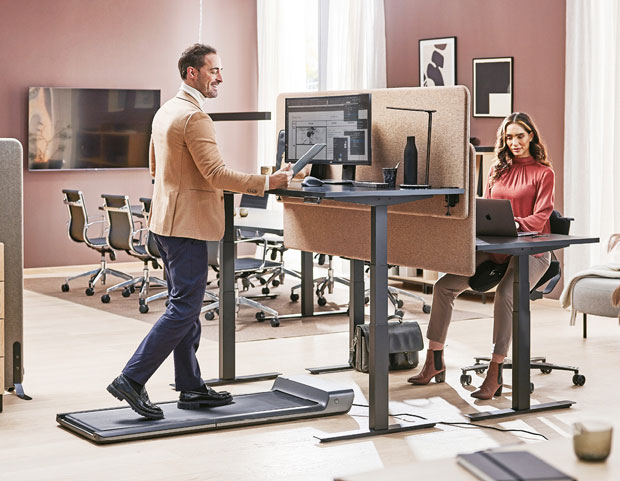Desk breaks aren’t enough to combat MSDs. FMJ asks Helen Beebe, UK Managing Director of AJ Products for her guide to establishing ergonomic workplace habits
Musculoskeletal disorders (MSDs) are driven largely by the rise in sedentary desk jobs, increased reliance on technology and the shift towards remote and hybrid working models. According to the HSE, work related MSDs costs the UK economy over £5.7 billion annually and it is estimated that over four million workdays are lost due to back pain alone.
A recent survey revealed that more than one in five UK workers experience daily neck, shoulder and back pain, with remote employees and women having the highest levels of discomfort. The survey, conducted by workplace solutions provider AJ Products, also investigated the effects of desk breaks on workplace pain. Taking desk breaks is often recommended to prevent workplace pain, the survey found no direct link between desk break frequency and a complete absence of pain.
While movement is beneficial to combat workplace pain, it is not enough on its own. Workspaces need better ergonomic setups to actively promote movement and better posture.
CHANGE OF APPROACH
If desk breaks alone won’t solve the problem, how can employers take a proactive approach to reduce MSDs in any workplace setting?
Helen Beebe, UK Managing Director of Swedish-owned AJ Products, which specialises in ergonomic workplace furniture explains:
“Workload pressures often keep us at our desks. We grab a quick coffee or take video calls instead of visiting a colleague at another desk. If we do leave our desks, we return and frequently fail to address posture correction.”
Modern working patterns have employees spending prolonged hours at their desks, with nearly 30 per cent of UK desk workers admitting they go three hours or more without a break.
Says Beebe: “This unhealthy attitude affects both mental and physical health. Other cultures do more to address this problem. In our Nordic offices, for example, lunchtime is sacred with all employees eating lunch together in the company canteen, ensuring they have a break of at least half an hour from their workstation. It’s also strongly encouraged to take a morning and afternoon break as a team. It’s just one of the ways in which movement, ergonomics and work-life balance are prioritised.”
Remote workers, as the largest group of neck, shoulder and back pain sufferers, often work on unsuitable furniture – kitchen tables or makeshift desks in corners of a bedroom. Hybrid employees face inconsistent workstation setups by switching between home and the physical office environment. Office-based staff aren’t exempt from suffering pain either – hot-desking and space-saving layouts can lead to poor ergonomic alignment.
Beebe suggests encouraging a culture of movement for home workers, such as standing during virtual meetings or using sit-stand desks where movement comes naturally when standing. “Wherever your employees are based or located, they need consistency in ergonomic support.”
She suggests training remote and hybrid workers on effectively setting up a home workstation rather than assuming it is already known. “Some organisations already offer standardised ergonomic kits such as laptop stands and specialist ergonomic chairs to their remote workers; we need to see more of this type of modernisation across businesses.”





